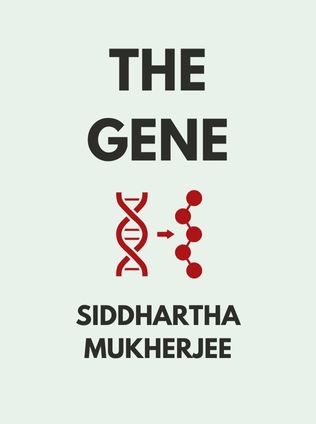
The Gene
An Intimate History
By Siddhartha Mukherjee
Published 06/2016
About the Author
Siddhartha Mukherjee is a distinguished physician, oncologist, and author, renowned for his ability to translate complex scientific ideas into accessible narratives. His deep expertise in the field of cancer research and genetics has earned him international acclaim. Mukherjee's debut book, The Emperor of All Maladies: A Biography of Cancer, won the Pulitzer Prize for General Non-Fiction in 2011 and established him as a leading voice in popular science writing. His follow-up, The Gene: An Intimate History, delves into the history and science of genetics, tracing its development from ancient theories of heredity to modern advancements in genetic engineering.
Born in New Delhi, India, Mukherjee pursued his education at Stanford University, the University of Oxford as a Rhodes Scholar, and Harvard Medical School, where he earned his M.D. His background in medicine and research informs his writing, allowing him to present the scientific narrative with both authority and empathy. The Gene is as much about the science of genetics as it is about the personal and societal implications of our expanding understanding of the gene. Mukherjee's work is characterized by its blend of rigorous scientific detail and profound humanism.
Main Idea
The Gene: An Intimate History is an exploration of the history, science, and implications of genetics. Mukherjee presents the gene not only as a unit of heredity but as a powerful force that shapes our bodies, behaviors, and identities. The book traces the evolution of genetic science, from early theories of inheritance to the discovery of DNA, and onward to the ethical dilemmas posed by genetic engineering. Mukherjee argues that understanding genetics is crucial not just for science, but for grappling with the moral and philosophical questions of what it means to be human.
Table of Contents
- Introduction: The Birth of an Idea
- Part 1: The Discovery of the Gene
- Part 2: Chromosomes and DNA
- Part 3: Writing and Reading Genes
- Part 4: Genes and Their Impact on Identity
- Part 5: The Ethical Dilemmas of Genetic Engineering
- Conclusion: The Future of Genetics
Introduction: The Birth of an Idea
The concept of the gene as the fundamental unit of heredity emerged from the confluence of several scientific discoveries. Charles Darwin’s theory of evolution by natural selection provided a framework for understanding how traits are passed down through generations, but it lacked a mechanism for inheritance. This gap was filled by Gregor Mendel, whose experiments with pea plants revealed that traits are inherited in discrete units, later termed genes.
Mendel’s work went largely unnoticed during his lifetime, but it was rediscovered at the turn of the 20th century, setting the stage for the development of modern genetics. The term "gene" was coined by Danish botanist Wilhelm Johannsen in 1909, marking a pivotal moment in the history of science. As researchers began to unravel the mechanisms of inheritance, they realized that genes were the key to understanding not just heredity, but the very essence of life itself.
Darwin’s Evolutionary Theory
Charles Darwin’s theory of evolution, articulated in his 1859 work On the Origin of Species, proposed that species evolve over time through a process of natural selection. Darwin observed that individuals with traits better suited to their environment were more likely to survive and reproduce, passing those traits on to the next generation. However, Darwin did not know how these traits were inherited. He speculated about the existence of "gemmules"—hypothetical particles that carried hereditary information—but this idea was not supported by empirical evidence.
"Darwin laid the groundwork for understanding the process of evolution, but it was Mendel who provided the key to unlocking the mysteries of heredity." — Siddhartha Mukherjee
Mendel’s Pea Plant Experiments
Gregor Mendel, an Augustinian monk, conducted experiments in the 1860s that would later form the foundation of genetics. By cross-pollinating pea plants with different traits, such as flower color and seed shape, Mendel discovered that traits are inherited in specific patterns. He proposed that each trait is controlled by a pair of "factors" (now known as genes), one from each parent. These factors could be dominant or recessive, determining how the trait is expressed in the offspring.
Mendel’s findings were summarized in two fundamental principles of genetics:
- The Law of Segregation: Each organism carries two alleles for each trait, which segregate during gamete formation, so each gamete carries only one allele for each trait.
- The Law of Independent Assortment: Alleles for different traits are distributed to gametes independently, meaning the inheritance of one trait does not affect the inheritance of another.
Although Mendel’s work was not recognized during his lifetime, it was rediscovered in the early 20th century, and his principles became the cornerstone of modern genetics.
Sign up for FREE and get access to 1,400+ books summaries.
You May Also Like
The Body Keeps the Score
Brain, Mind, and Body in the Healing of Trauma
By Bessel van der KolkFactfulness
Ten Reasons We're Wrong About the World – and Why Things Are Better Than You Think
By Hans Rosling



















